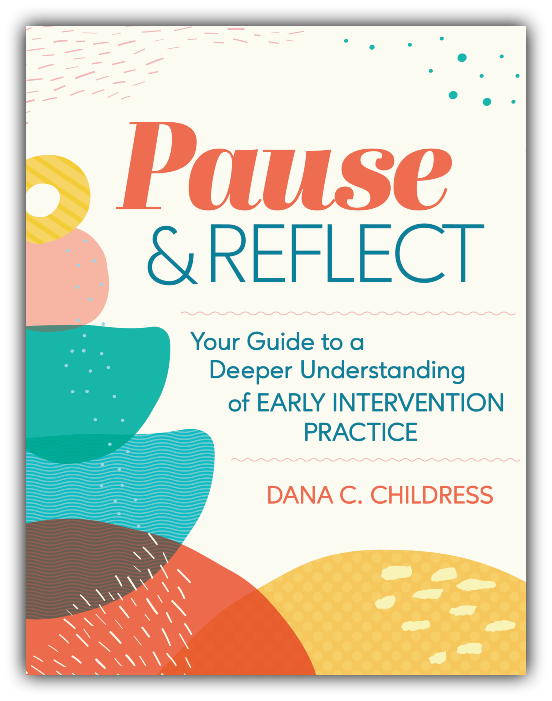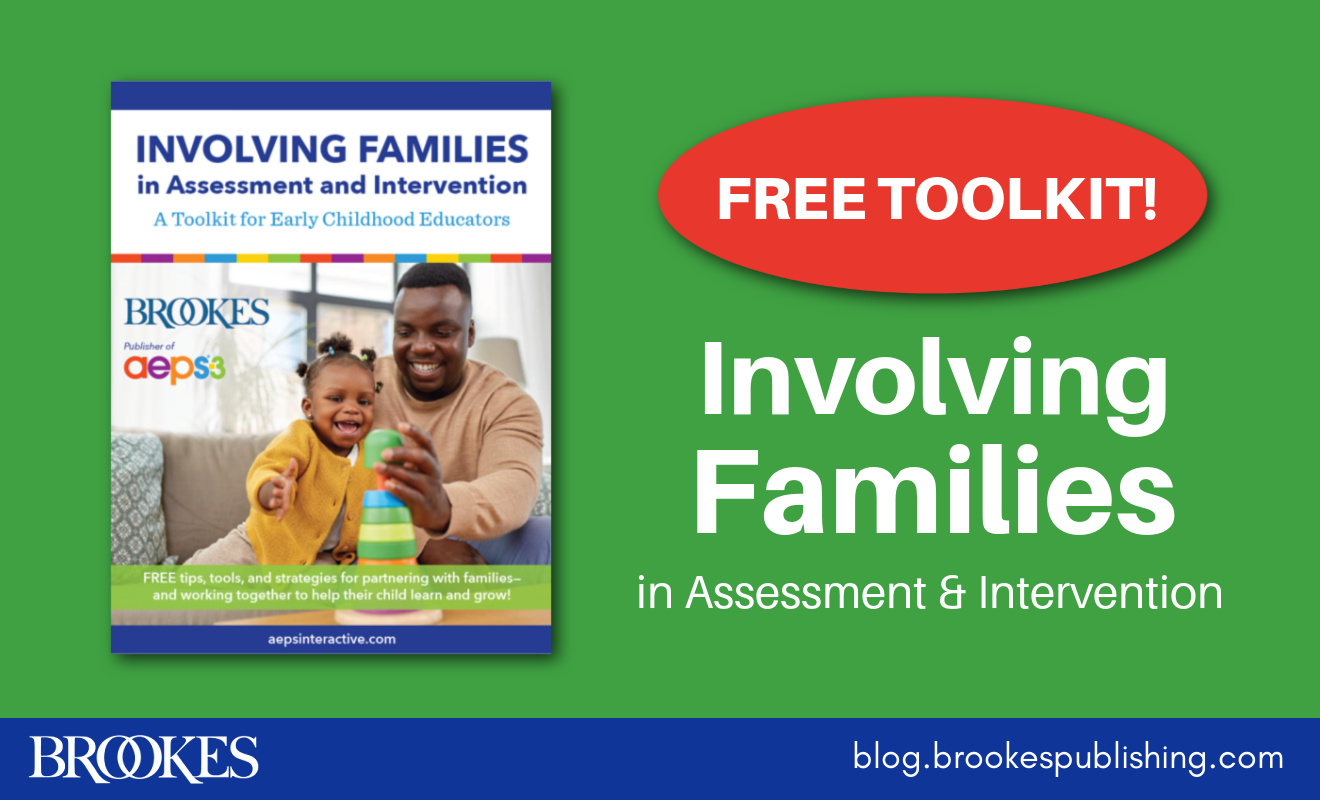Working with Caregivers: 4 Adult Learning Principles Every Home Visitor Should Know
April 30, 2024
 Early intervention visits benefit children and families most when caregivers are empowered to use what they learn between visits. In her early intervention guidebook Pause and Reflect, Dana Childress offers four guiding principles home visitors should keep in mind when working with caregivers. These important adult learning principles will help you partner effectively with families and ensure that the benefits of intervention last long after the visit is over.
Early intervention visits benefit children and families most when caregivers are empowered to use what they learn between visits. In her early intervention guidebook Pause and Reflect, Dana Childress offers four guiding principles home visitors should keep in mind when working with caregivers. These important adult learning principles will help you partner effectively with families and ensure that the benefits of intervention last long after the visit is over.
Principle 1: Caregivers Learn Best When What Is Being Learned Is Immediately Relevant and Useful

By having conversations with families about their priorities for their children’s development, you can identify what’s important to caregivers and use that information to focus intervention. Finding out what is most immediately relevant for the family is essential when developing IFSP outcomes. The outcomes on a child’s IFSP should reflect what the caregivers want the child to be able to do, and what caregivers want is often based on a combination of their own priorities and concerns and what they learn about the child’s development through the assessment process. This conversation doesn’t just happen at the intake or the first IFSP meeting; it’s an ongoing conversation, because what is most relevant and useful to the family of an infant or toddler changes over time.
It’s important to be flexible and open to learning about what is most meaningful to the caregiver on any visit. You might walk in the door expecting to address one outcome but end up needing to shift gears because something else takes precedence. Taking the time to address what is most relevant and useful for the family not only motivates the caregiver to learn, it also builds rapport, helps the caregiver feel respected and heard, and will likely make it easier for them to benefit from other intervention opportunities after their most important need has been addressed.
 Principle 2: Caregivers Learn Best When New Knowledge Is Built on Prior Knowledge and Experience
Principle 2: Caregivers Learn Best When New Knowledge Is Built on Prior Knowledge and Experience
If you understand what the caregiver already knows or has already tried when addressing an IFSP outcome, you’ll be more likely to develop meaningful intervention strategies. Without this information, you might be throwing strategies at the wall and hoping something will stick. While making suggestions to families is an essential part of what you do, it’s important to take the time to explore prior knowledge and experience first. That way, you’ll be less likely to waste time guessing, and you can use what you learn to identify strategies that may be a better fit for the family.
Principle 3: Caregivers Need to Understand What They Are Learning, Why It Is Important, and How to Use It With Their Children

It’s not enough to suggest or model an intervention strategy that you think will be useful and relevant. Take the time to explain the strategy, describing the steps you’re taking and/or walking the caregiver through what to do.
Let’s think about how this applies to modeling, which is a teaching strategy we use a lot in early intervention. Rush and Shelden suggested that whenever we model a strategy for a caregiver, we describe what we will do or what we are doing and invite the caregiver to look for something specific. For example, you might ask the caregiver to watch how the child reacts, or encourage the caregiver to notice where you place hands while moving a child who is learning to transition from being on hands and knees to sitting upright. This is a great strategy for helping the caregiver understand what you’re doing and why, because it gives the caregiver an active role while you model and facilitates understanding about how to use the intervention strategy.
It’s also important to make sure the caregiver understands how to use the intervention strategy without your support. Check for understanding, reflect after a practice opportunity, and specifically talk through a plan for how to use the strategy between visits or in the context of other routines. This will help the caregiver process what they’re learning.
 Principle 4: Caregivers Learn Best Through Active Participation and Practice
Principle 4: Caregivers Learn Best Through Active Participation and Practice
Active participation by the caregiver is what connects what happens during visits with what happens between visits. Keep in mind that you set the tone for the visit and teach caregivers about their active roles—don’t assume that they already know.
What does active participation look like? Does it count when the caregiver is actively participating in a lively conversation with you while you play with the child? Yes and no. Active participation that engages the caregiver to brainstorm with you, think about what the child is doing and why, and consider their role in the child’s development is very useful. If participation stops at the end of that conversation, however, then it’s less impactful. The adult learner needs to do something with what they’re learning. Conversation is essential, but be sure to add in some active practice based on that rich conversation. Now you’ve got yourself a caregiver who is actively engaged and learning!





Write a Comment
Your email address will not be published. Required fields are marked *
Post a Comment